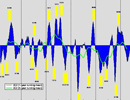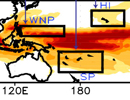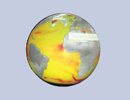IMERG: Rainfall estimates combining data from all passive-microwave instruments in the GPM Constellation (GPM IMERG L3 V06B): Research / Final Run
GPM Mission Concept
The Global Precipitation Measurement (GPM) mission is an international network of satellites that provide the next-generation global observations of rain and snow. Building upon the success of the Tropical Rainfall Measuring Mission (TRMM), the GPM concept centers on the deployment of a “Core” satellite carrying an advanced radar / radiometer system to measure precipitation from space and serve as a reference standard to unify precipitation measurements from a constellation of research and operational satellites. Through improved measurements of precipitation globally, the GPM mission will help to advance our understanding of Earth's water and energy cycle, improve forecasting of extreme events that cause natural hazards and disasters, and extend current capabilities in using accurate and timely information of precipitation to directly benefit society. GPM, initiated by NASA and the Japan Aerospace Exploration Agency (JAXA) as a global successor to TRMM, comprises a consortium of international space agencies, including the Centre National d’Études Spatiales (CNES), the Indian Space Research Organization (ISRO), the National Oceanic and Atmospheric Administration (NOAA), the European Organization for the Exploitation of Meteorological Satellites (EUMETSAT), and others.
For more information on the GPM mission: http://pmm.nasa.gov/GPM
IMERG L3 Version 06B: Release Notes
The IMERG dataset now includes TRMM-era data going back to June 2000. This algorithm is intended to intercalibrate, merge, and interpolate “all” satellite microwave precipitation estimates, together with microwave-calibrated infrared (IR) satellite estimates, precipitation gauge analyses, and potentially other precipitation estimators at fine time and space scales for the TRMM and GPM eras over the entire globe. The system is run several times for each observation time, first giving a quick estimate and successively providing better estimates as more data arrive. The final step uses monthly gauge data to create research-level products.
| Variables |
daily accumulated high quality precipitation from all available mw sources (mm)
daily accumulated precipitation (combined microwave-ir) estimate (mm) daily total error of precipitation estimate (mm) count of valid half-hourly hqprecipitation retrievals for the day count of valid half-hourly precipitationcal retrievals for the day count of valid half-hourly randomerror retrievals for the day count of valid half-hourly precipitationCal retrievals for the day where precipitation is greater than 0 count of valid half-hourly hq precipitation retrievals for the day |
| Zonal | Global by 0.1 deg |
| Meridional | Global by 0.1 deg |
| Vertical | |
| Temporal | Jun 1, 2000 to Jul 31, 2021 (updated monthly) by 1 day |
| Static? | no |
| Volume | 14 MB/day |
| Server | public:      |
| Source | http://pmm.nasa.gov/data-access/downloads/gpm |
| Acquired | Nov 19, 2019 (Updated Nov 2021) |
| APDRC contact | |
| Supplements | IMERG Technical Documentation (9 September 2019) IMERG Algorithm Theoretical Basis Document (ATBD V06) |































